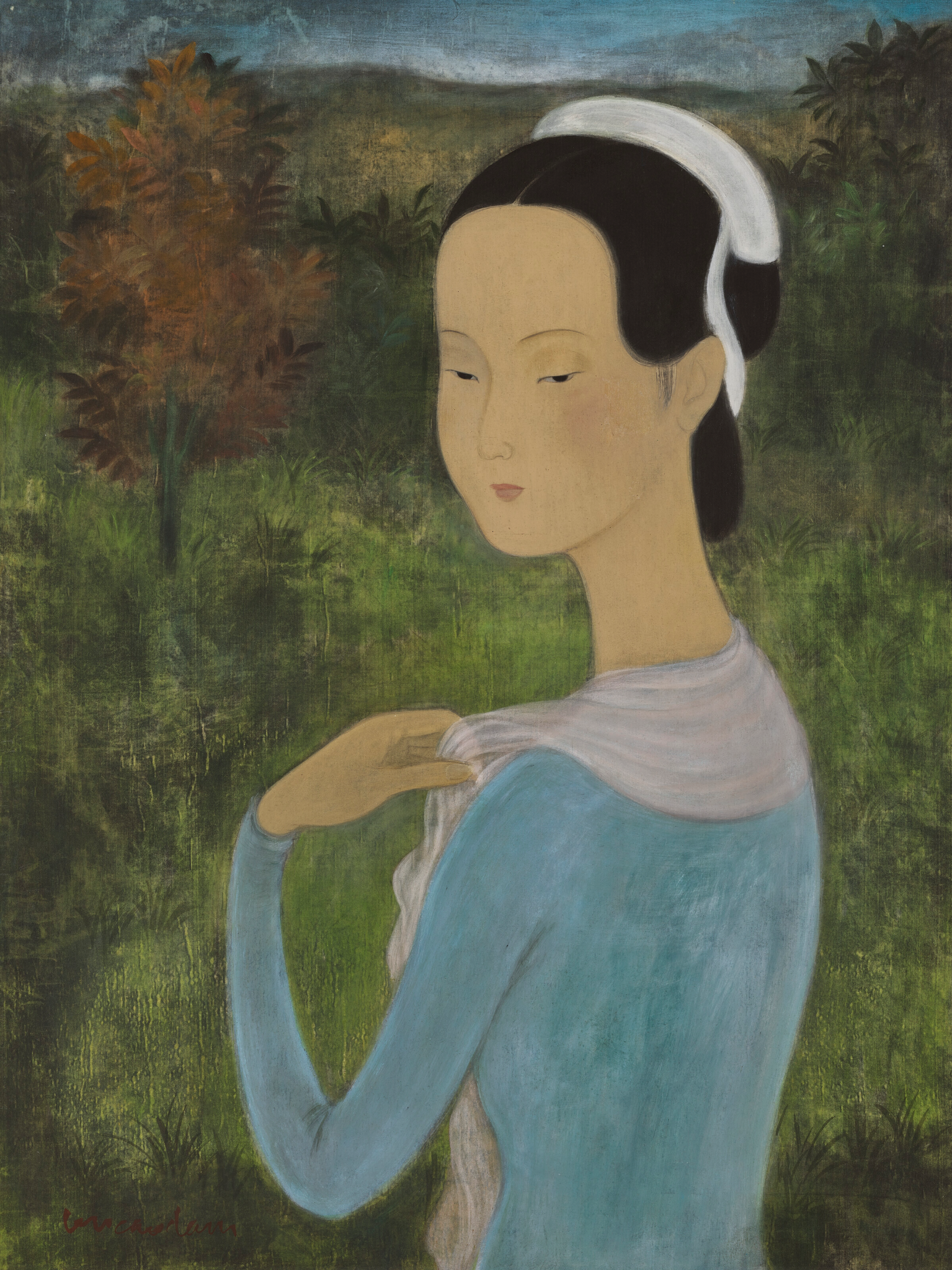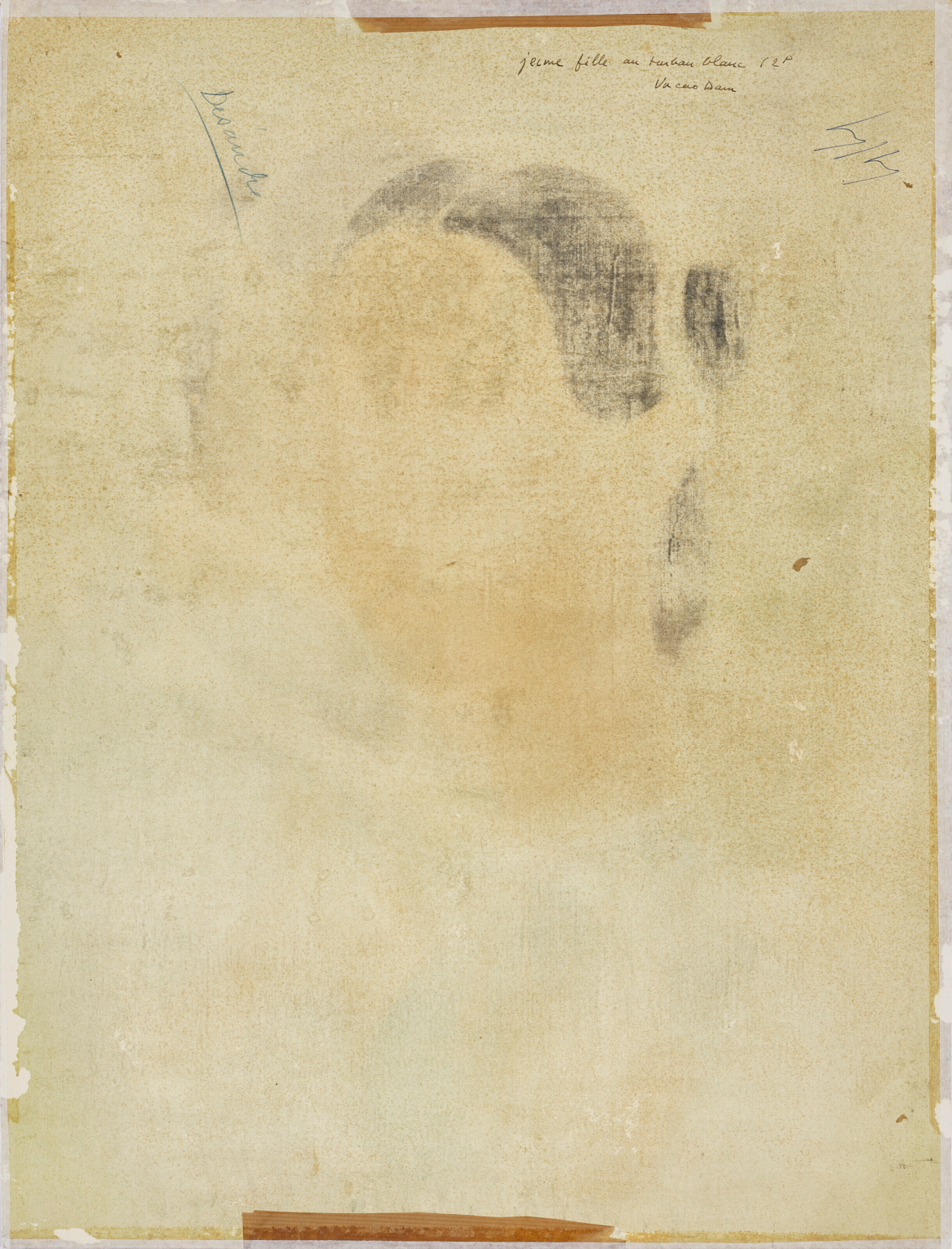
Christie's is proud to present a magnificent masterpiece of Vu Cao Dam (1908-2000), and the spring auction sale will be on 28 May 2023.
Vu Cao Dam (1908-2000)
Jeune fille au turban blanc (Young Lady with White Turban)
signed ‘vu cao dam’ (lower left); signed and titled ‘Jeune fille au turban blanc Vu cao dam’ (on the reverse)
ink and gouache on silk
59 x 44.5 cm. (23 1/4 x 17 /2 in.)
Painted circa 1939
Price Realised HKD 2,520,000 at Christie's Hong Kong, 28 May 2023


When Vu Cao Dam painted this magnificent silk in 1939, he had lived in Paris for eight years. He desired to taste the fervour of the ‘City of Light’. He was the first of all his fellow students at the Indochina School of Fine Arts to venture into Paris, and succeed. His participation in the Colonial Exhibition of 1931, the Salons (notably the Independents, the French Artists, the Autumn Salons) and the AGINDO events made him well-known amongst scholars. In 1938, he exhibited at the Galerie de la Muette in Paris. That same year, on August 11, he married Renée Appriou. She was the absolute love of his life. They rented a modest house on rue Bertillon; Le Pho and Mai Thu lived together in a nearby studio.
However, not everything was easy. In Paris, even when supply and demand for art were endless and artists could garner considerable attention, the economic situation was difficult. The economic ‘Crash of 29’ created a negative impact throughout the decade, and the art world was affected. Vu Cao Dam lived sparingly off his art nourished by his passion, respect for others and erudition. His quest for knowledge of civilisations and individuals was unquestionable. His fascination for Khmer, Chinese Wei or Tang sculpture, his interest in the old masters—Clouet, Memling, Giotto, among others—and his contemporaries—notably Chagall, Marquet and Foujita—were constant throughout his life.
Taking from the world that best it has to offer and embellish it: this is Vu Cao Dam’s artistic quest in Jeune fille au turban blanc (Young Lady with a White Turban) which he does with a passion that transcends the artist.
On May 4th 2023, Michel Vu, son and expert of the painter, gave us the honour by commenting on the present work:
‘I really like this painting [...] I noticed the difference in technique between the representation of the figure and the landscape, [the latter] is much freer and shows his desire to "liberate" his painting, which he will do thereafter. I particularly like the harmony of the colours.’
This innovative painting testifies to the artist’s changing style reflecting his new state of mind.
The ‘much freer’ landscape in the background is built upon subtle layers of varying green. True freedom is universal, which is why the artist offered us this unique landscape that is not defined by a specific location. It is a scene that can be attributed to many places in the world. No palm or banana trees with large golden leaves, or Sugarloaf trees, shaded or golden. No rice fields, no jungle, no architectural or furniture elements that seem distinctly localised, nor are there any contemporary representations of Vietnam (especially seen in lacquer). No. We could be in Europe or Asia. The plurality of choices offered to us by the artist reflects how this present work can be appreciated universally.
The sky in the background, depicted in layers of varying blues, is another example. The expansive horizon (which appears stylistically Asian) signifies the universality of the sky. The sky can be seen everywhere because it is from nowhere. Here again, the work features a particularly successful ‘harmony’ of colours.
The earth and the sky.
These are the elements that surround the young woman.
She is the quintessence of Vietnam, as rendered by Vu Cao Dam, evident from her turban, ao dai and shawl. Her style recalls of Vietnam in the 1930s, a period in which the artist lived overseas. It is not insignificant that Vu Cao Dam titled his work with feminine and Vietnamese attributes.
Let us look at her: she is standing in front of us. We would find her slightly cold with her distant gaze, had not for her turned pose and her loose gesture that evinced such seduction and elegance.
She keeps us at a distance. Vu Cao Dam was not only an incredible painter, he was also the greatest Vietnamese sculptor. Here, he admirably ‘sculpted’ the figure of this woman with a high and graceful neck. She readjusts her shawl with an elegant hand, gives us one last look and turns away from us to face the world, to face her destiny.
The white turban, which contrasts strongly with the black ink of the hair, the blue ao dai, the transparent tulle all in subtle washes and nuanced tones will be from now on a quotation in the work of the painter more than a claim.
Vu Cao Dam’s transmutation through art: He is the young woman.
An artist has only one homeland: his art. In 1939, Vu Cao Dam was certain of this stance.
Jean-François Hubert
Senior Expert, Art of Vietnam










